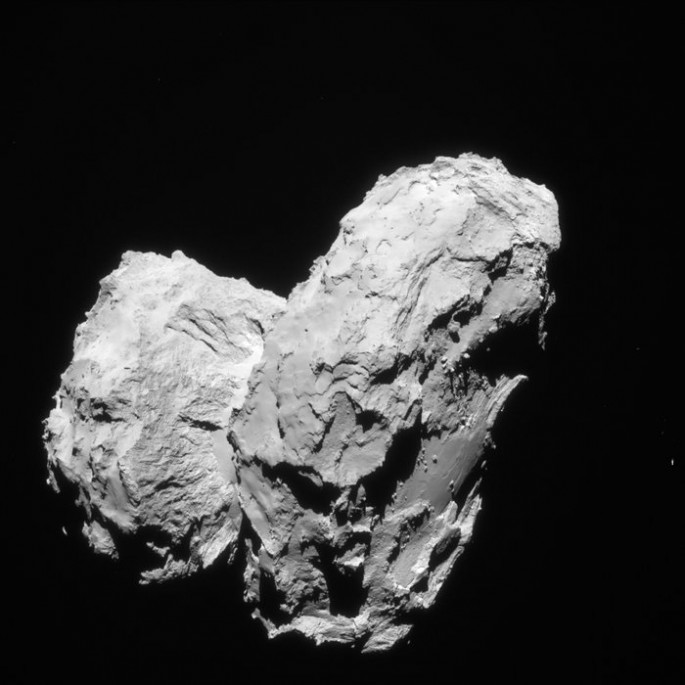Scientists reveal that the comet that is following by European Space Agency's Rosetta probe is apparently made of two separate bodies that later formed together, creating the comet's odd "rubber ducky" shape.
For more than a year, scientists were involved in a debate of how the comet's twin lobes came to be. Last August 2014, the Rosetta probe arrived within the orbit of comet 67P/Churyumov-Gerasimenko to study how comets are supposedly ancient remnants of the solar system.
In November 2014, Rosetta deployed its Philae lander on the surface of the comet, marking the first man made spacecraft to ever land on a comet. However, constant communication problems plague the lander from reaching to its mothership Rosetta, where the lander is believed to be located under a shadow of a cliff, after a suffering a bumpy, rough landing.
Meanwhile, scientists are now excited over this new discovery regarding the comet's mysterious shape. Prior theories involve how the comet's so-called "neck" region was formed from erosion that left two connecting lobes.
In this new study, further analysis and examination of high resolution images that were captured by Rosetta between August 2014 and March 2015 reveal that the lobes were originally two separate cosmic objects but similar bodies.
Many have described the comet's shape as a rubber duck toy where scientists conclude that the neck region is the point where the two bodies had a collision and eventually merged into a single comet.
According to lead author of the study Matteo Massironi from the University of Padova in Italy, it is clearly depicted in the images that both lobes possess an outer envelope of material that are organized in distinct layers, which are estimated to extend to more than 700 meters below the surface.
Massironi adds that this can be compared to layering found in an onion, but only in this case that two separate onions that have different sized have grown independent from each other before ultimately fusing together.This new study is published in the journal, Nature.



























